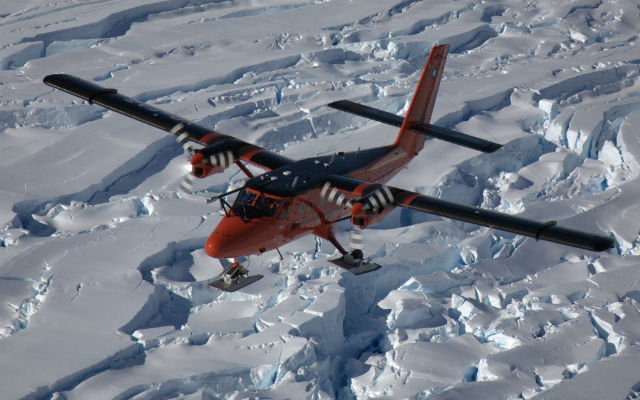The British Antarctic Survey (BAS) is to acquire a fixed-wing unmanned air vehicle to complement its fleet of manned aircraft in carrying out scientific research.
Requirements are being formally defined, but the BAS says it needs an off-the-shelf vehicle with a range of some 540nm (1,000km) and a payload capacity of about 8kg (17.6lb).
Once the requirements are established, they will be published in the Official Journal of the European Union in accordance with laws surrounding public-sector organisations. A tender is expected early in 2015.
“We need to create realistic requirements,” Carl Robinson, head of airborne survey technology at the BAS, told Flightglobal at the Commercial UAV Show in London. “Only then will we get the most response back from the manufacturers … and we’ll have the most choice of platforms.”
Payloads will include standard visual sensors as well as more specialised equipment such as atmospheric monitoring sensors, so weight will vary. “As it is with our current aircraft, it is a trade-off with fuel and equipment,” Robinson adds.

Flightglobal
When the platform is selected, a small number of vehicles will be ordered, but another order is expected if the vehicle proves itself useful to the mission.
The current BAS fleet of manned aircraft consists of four de Havilland DHC-6 Twin Otters and one de Havilland Canada Dash 7.
Because of the Antarctic climate, the manned aircraft cannot be used to carry out research during winter, which falls roughly between March and October. The BAS envisages the UAV operating throughout that period.
“There is actually a lot of interesting research that can be carried out during these months,” Robinson says. “It [the UAV] would allow us to do continuous research throughout the year – that’s one of the bullet points in why a UAV would be important to BAS.”
Another benefit comes from the logistics burden associated with current operations. When teams are deployed to test sites away from BAS bases, a large amount of spare equipment must be transported alongside them, and any emergency spares are delivered with a Twin Otter.
The BAS plans to use a UAV to carry small spares to the sites as they are needed instead of routinely shipping cases of supplies.
Airspace and environmental regulations surrounding the use of UAVs have been considered throughout the process, and the BAS established a regulations committee for the tender earlier this year. “We’re aware that UAVs aren’t the size of manned aircraft and that they have different capabilities and flight levels,” Robinson says. “There are already very good environmental guidelines in place, but they don’t take into account how UAVs operate.”
A new polar ship with a helipad is being purchased, and UAVs can be operated from it.
The BAS expects to acquire a rotary-wing UAV that would have a more permanent place on the new ship. Such a vehicle could fly ahead of the ship, surveying ice formations and providing more accurate data than can be obtained with satellite imagery, Robinson says.
Source: FlightGlobal.com






















